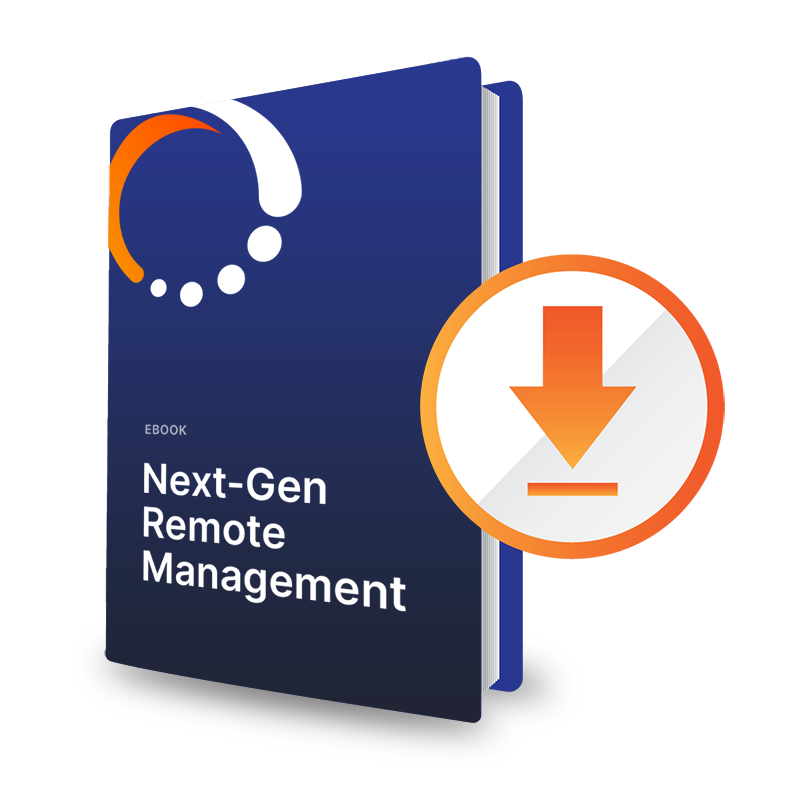How to Select the Best RMM Tool for Your Business
Among the considerations for selecting an RMM tool, executives will want to make sure it can help them cut costs with fewer truck rolls.

Remote Monitoring and Management (RMM) software and services continue to scale in importance for businesses, increasing productivity, reducing the need for costly IT support, and creating automations for vital, routine tasks. Here’s a quick guide to understanding the benefits of RMM and ten tips for selecting the right RMM for your businesses.
RMM Basics
Remote Monitoring and Management (RMM) has grown rapidly in recent years, particularly during the COVID-19 pandemic as businesses scrambled to work remotely while still securing company devices, networks and facilities. The shift has significantly altered the IT landscape. For decades, IT issues — from software updates to hardware failures — required an in-person fix. RMM allows in-house IT staff to monitor, support, fix and update multiple devices remotely from a single workstation.
Once a luxury for large enterprises, RMM is now widely used by small to medium-sized businesses and is finding a foothold across multiple industries for a growing variety of uses.
RMM software monitors entire networks and systems and can monitor hardware performance, collect and organize usage data, generate reports, perform updates and deliver patches, preventing costly downtime and cutting costs with fewer IT truck rolls.
RMM software and services save money for businesses not only by reducing IT expenses, but also by automating certain processes and monitoring network devices and the multiple, disparate applications now commonly found, or being added, to modern operations.
Real-time monitoring and alerts management keeps IT systems functioning properly, making sure businesses keep transactions and operations running smoothly. RMM also prevents costly failures that cause systems to go down, which can cause loss of data, files and emails.
For companies, RMM software partners will continue to deliver a competitive edge and propel growth and scale in the coming year.
Multiple RMM Benefits
Here’s a quick glance at the multiple areas where RMM can deliver benefits and protections for businesses.
Reduced Maintenance – Many device users put off maintenance and ignore update alerts. Rather than waiting on individual users to comply with suggested maintenance schedules, RMM can monitor all company-owned devices and automate needed updates. This prevents unnecessary IT intervention and allows workers to remain productive. RMM systems also allow for the automating and monitoring of patch updates.
Increased Productivity – Because RMM streamlines network and system monitoring and maintenance, productivity increases and MSPs and business leaders are freed up to focus on the things that can help the business grow.
Report Generation – RMM allows businesses to collect data from operational and IT processes and turn data into analytical reports. RMM tools can collect useful data about client software, hardware & networks, track network & system health, and monitor multiple endpoints and clients. In case of any problem, alerts and tickets can be generated. Reports can be automatically generated and give business owners a birds-eye view of projects and operations.
Unattended Device Network Management – RMM has become the preferred method for managing unattended device networks. Remote monitoring and management software allows companies to carry out all necessary tasks, such as adjusting security settings, distributing various content files to digital signs, pushing system upgrades and preventing or resolving downtime. Real-time notifications may be adjusted remotely and configured according to the company’s needs and requirements.
Tasks RMM software can automate include:
- Creating system restore points
- Deleting temporary files
- Rebooting a device
- Shutting down a device
- Running a disk check
- Running scripts
Report types that RMM software can generate include:
- System health
- Device health
- User health
- Audit of the system’s inventory
- Licensing
- Software inventory
- Patch feedback
How to Select an RMM Tool
The most important things to consider when selecting a remote monitoring and management platform include:
Performance – RMM tools should be adaptable and built on flexible cloud architecture.
Innovation –RMM partners are continuously updating to deliver current and proactive solutions, evolving to meet tomorrow’s solution needs.
Intuitive – RMM platforms should be easy to use and easily integrated with key business systems.
Experience – RMM vendors should have experience with multiple client types, have experience with implementations and understand a diversity if business operations.
Top RMM Considerations
Here are key questions to consider when selecting RMM tools and services:
- Will onboarding and integration be easy? Make sure RMM tools have simple onboarding that matches the specific needs of your organization. The solution should also be scalable and easy to deploy.
- Is the RMM solution configurable? Is there flexibility within the RMM solution to tailor fit to your company’s unique needs?
- Can the RMM software monitor networks? RMM should allow for the oversight of multiple device types and elements, including laptops, printers, firewalls and routers.
- Does the RMM solution offer continuous monitoring and rapid support? RMM tools should be monitoring 24/7 and, as a business partner, should include speedy support if issues arise.
Canopy’s platform is built as a configurable solution that is platform agnostic, which makes it uniquely flexible and capable of keeping all systems running smoothly.
If you would like to learn more about the Canopy platform, we would love to hear from you. You can contact us or schedule a risk-free demo to see results right away.













